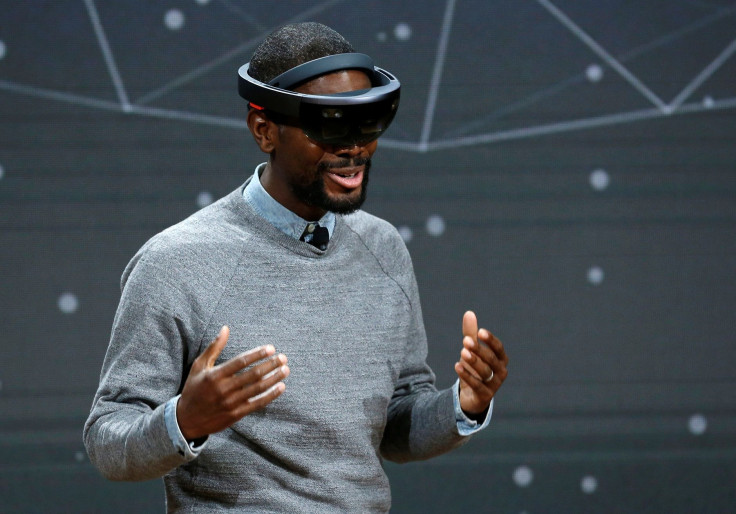Microsoft announces new VR headsets for Windows 10

Microsoft’s partners will ship a new line of virtual reality (VR) headsets to take advantage of Windows 10’s VR and holographic capabilities. The headsets will be powered by the forthcoming Windows 10 Creators Update.
Microsoft said that the headsets will start at US$299 (AU$394) and will include inside-out tracking sensors, which remove the need for external cameras or laser systems like those on the current Oculus Rift or HTC Vive. HP, Dell, Lenovo, Asus and Acer are all listed as partners. While the headsets don’t need external trackers, the one featured on the demo still looks to be wired, not totally self-contained like Santa Cruz.
This raises some interesting questions. How powerful will the PC powering these Windows 10 headsets need to be? Full-blown VR is much more graphically demanding than the HoloLens’ augmented reality. The laptop in the image doesn’t appear bulky, but Nvidia’s new GTX 10-series mobile chips are powerful yet cool enough to drive virtual reality experiences from relatively svelte notebooks.
The new headset may be different from the Microsoft HoloLens but it appears it shares some similar features with Microsoft’s augmented reality device. During Microsoft’s on-stage demo, the Windows 10 VR headset was controlled using voice commands and hand gestures, similarly to how you control the HoloLens. No obvious in-hand controllers were visible.
The question is if these more affordable, tethered VR headsets will stand in as “consumer HoloLens” alternatives until Microsoft’s able to perfect the design of its headset and drive the cost of its standalone design down to more reasonable level, which may take years.
The new headset seems to be popular with PC manufacturers. Big names such as HP, Dell, Lenovo, Asus and Acer will all offer Windows 10 VR headsets. Microsoft and its partners might institute quality controls and improve on the headset in future updates in both hardware and software.
Microsoft’s listed partners are all already worked in VR to some extent. Acer is working with Starbreeze to produce the high-end StarVR headsets, and Asus showed off a leather-strapped headset behind glass at Computex. Lenovo and Chinese startup AntVR partnered for a mobile VR setup. While HP and Dell don’t have headsets, both have produced backpack-mounted PCs.
None of these companies, however, are major players in the consumer headset space, which is dominated by HTC, Sony, Samsung and Facebook-owned Oculus. In fact, given that Microsoft has worked closely with Oculus in the past, it’s interesting to see the company absent at the announcement of what is essentially a new line of Windows VR products.




















